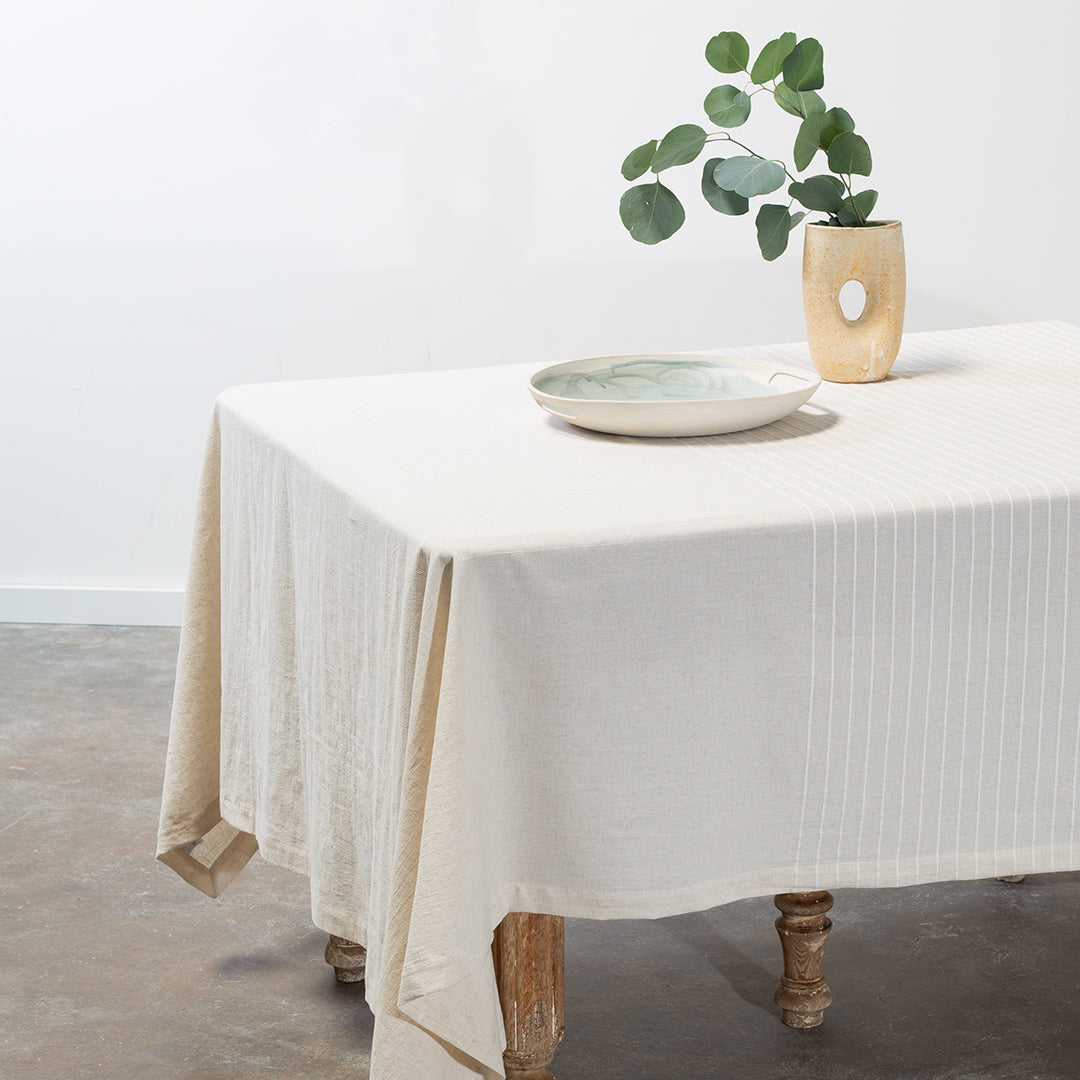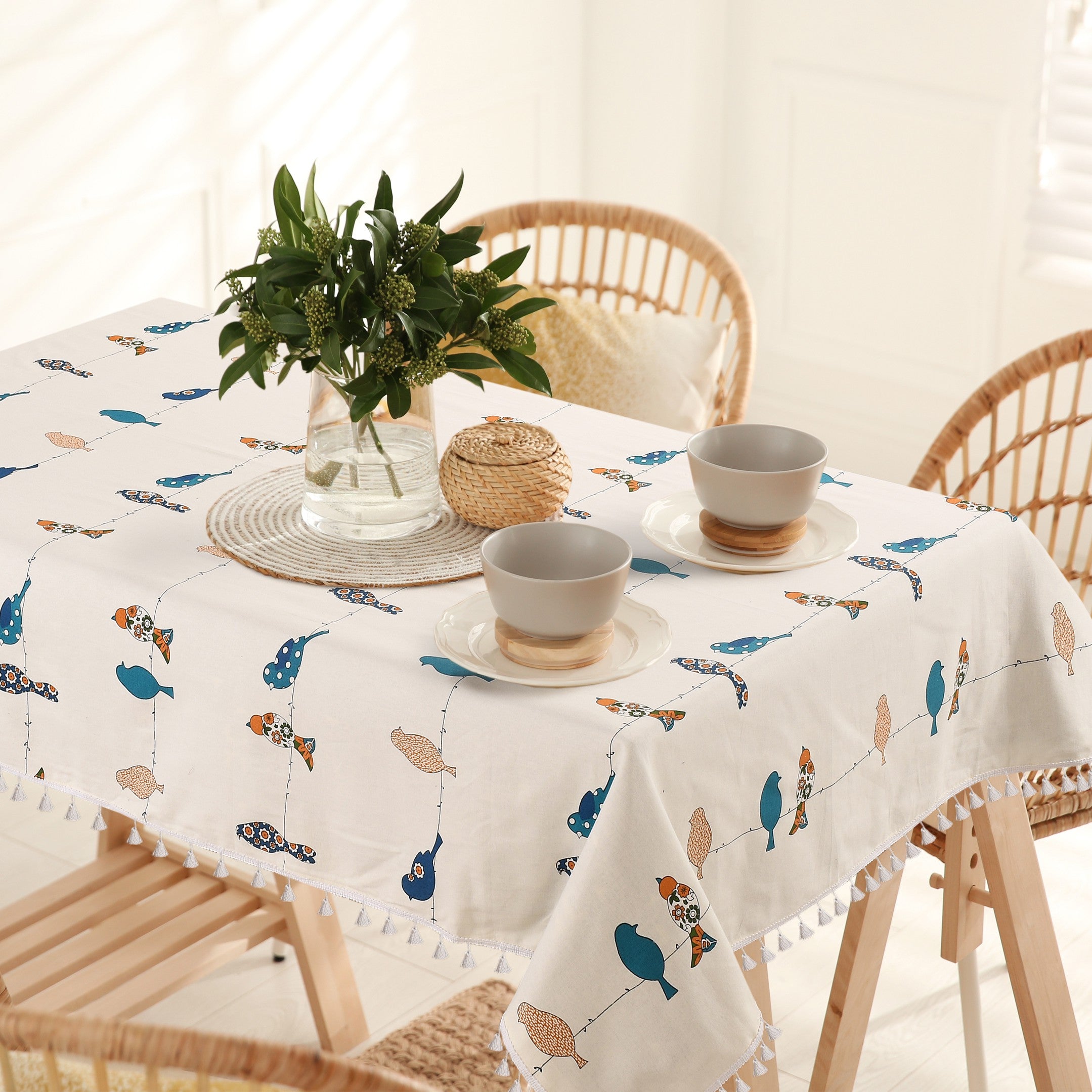Versatile Table Cloths: Styles and Fabrics for Any Occasion
Wiki Article
Bed Linen Material Innovations: Exploring Modern Trends and Creative Applications in Design and Fabric Industry
From sustainable production techniques to sophisticated weaving modern technologies, the evolution of linen is reshaping the landscape of the fabric sector. As we dive into the worlds of innovative style applications and the development of bed linen blends and crossbreed fabrics, a new phase unravels in which linen's duty in future textile developments takes center stage.Sustainable Practices in Bed Linen Production
Sustainable methods in bed linen production have actually come to be increasingly vital in the textile market's initiatives to lessen ecological impact and advertise honest sourcing approaches. Linen, an all-natural fiber originated from the flax plant, uses a variety of benefits such as toughness, breathability, and biodegradability. Nonetheless, typical methods of linen production can include significant water consumption, pesticide usage, and energy-intensive processes.To resolve these difficulties, lots of textile producers are embracing lasting methods throughout the bed linen production process. This consists of sourcing flax from organic farms that avoid hazardous chemicals and chemicals, carrying out water-efficient retting strategies to extract fibers from the flax stalks, and using eco-friendly dyes and finishes. Furthermore, some firms are investing in renewable power sources to power their manufacturing centers and reducing waste through recycling and upcycling efforts.
Technological Advancements in Bed Linen Weaving
With the expanding emphasis on sustainable techniques in bed linen production, the textile market is currently experiencing a rise in technological advancements specifically focused on changing the art of linen weaving. These innovations are reshaping the way linen textiles are created, supplying raised performance, top quality, and imagination in weaving strategies.One of the key technical advancements in linen weaving is the assimilation of electronic looms. These innovative looms are geared up with software that enables intricate and complex layouts to be woven with precision. By digitizing the weaving process, producers can attain greater consistency and accuracy in their linen fabrics.
In addition, advancements in yarn spinning modern technology have actually made it possible for the production of finer and even more sturdy bed linen threads - table cloths. This causes softer and smoother linen textiles that retain their high quality also after several uses and laundries
Furthermore, the advancement of environmentally friendly dyeing processes and finishes for linen textiles is acquiring traction. These lasting techniques not just lower the ecological influence but likewise deal with the increasing customer need for fairly generated fabrics.
Creative Style Applications for Linen
Innovative artistic strategies are significantly forming the innovative design applications for linen in the textile industry. Linen's all-natural aesthetic charm and capability to mix with other materials make it a preferred selection for creating distinct garments and devices that cater to the environmentally aware customer.Moreover, designers are trying out with bed linen in home design, using its breathable and long lasting nature to craft stylish furnishings such as curtains, bedding, and furniture. The appearance and drape of linen bring a feeling of class and convenience to indoor spaces, including a touch of beauty to modern homes.

Linen Blends and Hybrid Fabrics

Hybrid materials, on the other hand, take the idea of blending an action further by including additional components such as metallic strings, recycled materials, or conductive fibers. These innovative textiles not just expand the style possibilities however likewise introduce practical aspects like conductivity, antimicrobial residential or commercial properties, or boosted toughness. Hybrid materials are increasingly being used in numerous industries, consisting of fashion, interior decoration, and technological textiles, where the need for multifunctional materials is on the surge.
Bed linen's Role in Future Fabric Innovations

In the world of future textile innovations, linen is expected to be a crucial gamer in the growth of advanced useful materials. Researchers and designers are discovering methods to improve bed linen's intrinsic top qualities with technical developments, such as incorporating wise textiles, nanotechnology, and performance finishes. These developments intend to raise linen's performance characteristics, making it suitable for a broader range of applications, from activewear to protective garments.
In addition, the combination of linen with other all-natural or synthetic fibers opens countless opportunities for developing unique textiles with unique residential or commercial properties and functionalities. By leveraging linen's features and discovering ingenious blends, the fabric market is poised to present amazing advancements that accommodate advancing customer requirements and sustainability requirements.
Verdict
In verdict, the exploration of sustainable practices, technological advancements, imaginative design applications, linen blends, and its function in future textile advancements highlight the continual advancement of linen textile in the contemporary design and fabric industry. With an emphasis on development and creative thinking, the adaptability and environment-friendly nature of linen make it a valuable product for makers and designers alike, leading the way for more developments and innovations in the field of fabrics.As we dive right into the worlds of innovative design applications and the appearance of bed linen blends and crossbreed directory materials, a brand-new phase unfolds in which bed linen's duty in future textile technologies takes center stage.
Discovering Check This Out the blend of bed linen with other materials has actually led to the appearance of ingenious blends and hybrid fabrics in the contemporary textile sector. Bed linen blends provide a special mix of the characteristics of bed linen with those of other fibers, resulting in textiles that have improved residential properties such as raised resilience, enhanced draping, and decreased wrinkling.The evolution of linen blends and hybrid materials has established the phase for Linen to play a pivotal role in driving future fabric developments.In the realm of future fabric advancements, linen is anticipated to be a key gamer in the development of sophisticated useful materials.
Report this wiki page